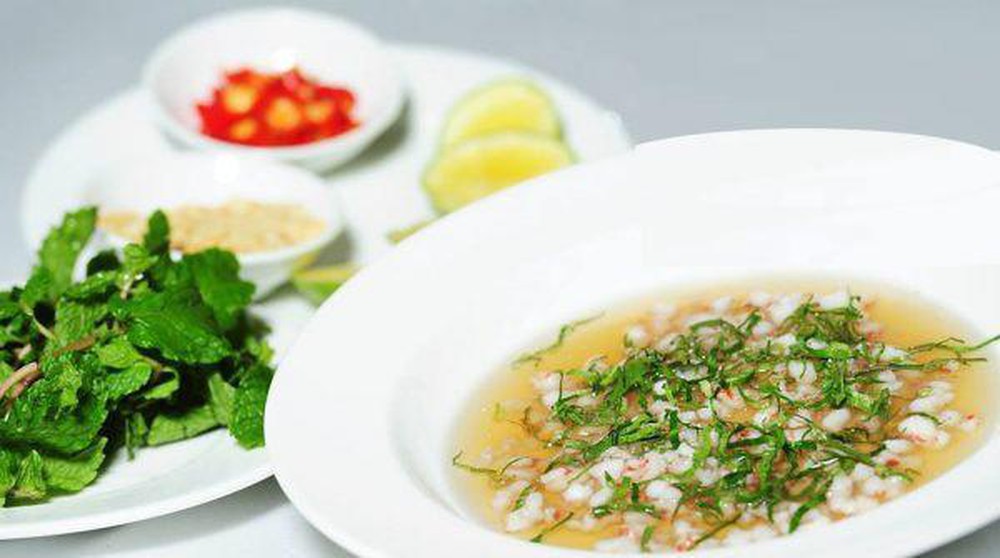Hungry shrimp blood soup – a dish that is both strange and familiar to many tourists. The dish is curious to many first-time visitors to Vung Tau. This delicious dish of Vung Tau specialties is not red like other blood soup but is white. It is served with star fruit, lettuce and rice paper. All blend together to create a cool taste that makes a deep impression at the first time. Hungry shrimp blood pudding is not only delicious, but it also has high nutritional value. As a unique and irresistible specialty, the price is reasonable, the more you have to hunt for it.

Address:
- Hai Phuong Restaurant: 685-695 Thirty April, Rach Dua
- Restaurant at Imperial Hotel Vung Tau: 159 Thuy Van, Thang Tam
Source: Collected internet.
Vietnam is a country on an S-shaped strip of land, located in the center of Southeast Asia, in the east of the Indochina peninsula, to the north by China, to the west by Laos and Cambodia, and to the southeast overlooking the sea. East and Pacific. Vietnam's coastline is 3,260 km long, and its land border is 4,510 km long. On land, from the northernmost point to the southernmost point (as the crow flies) is 1,650km long, from the easternmost point to the westernmost point the widest place is 600km (Northern region), 400km (Southern region), the narrowest place is 50km (Quang Binh).
The North and North Central regions have a humid subtropical climate with 4 seasons: Spring, Summer, Autumn, and Winter. The Central and South Central regions have a tropical monsoon climate, the extreme South Central and Southern regions have tropical savanna characteristics. At the same time, it is directly influenced by the trade monsoon climate, which often blows in low latitudes. The South often has a tropical savanna climate, hot and humid with two seasons: dry season and rainy season (from April-May to October-November). Every year, the cold and humid winter typical of the North contrasts with the warm atmosphere of Tet and spring in the South.
Eight UNESCO world heritage sites stretch across Vietnam. Each place offers interesting perspectives on local life and majestic natural beauty. The Imperial Citadel and Hue mausoleums take you back to the Nguyen Dynasty full of ups and downs. Hoi An ancient town was once a bustling meeting point for ships and traders around the world. Throughout other provinces and cities, you will encounter ancient relics, poetic scenes, and vivid pieces that create the picture of Vietnamese heritage.
Vietnam is the homeland of diverse bloodlines. The community of 54 ethnic groups is divided into hundreds of smaller groups. Each ethnic minority maintains its own culture, with its own rituals, costumes, and language. The best way to learn about them is through practical experiences such as living with indigenous people, or learning how to weave fabric with unique patterns. National culture is always an attractive highlight of Vietnamese tourism.